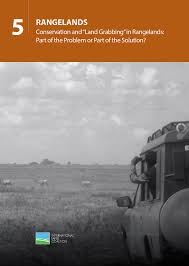conservação da floresta
AGROVOC URI:
Quand le syndrome Neerlandais: petrole, macroeconomie et forets au Gabon
Gabon’s oil wealth coincides with the fact that it is one of the most forested countries in Africa; about four-fifths of its land area is covered by forests. But this is not really a coincidence. The central hypothesis of this report is that oil rents have enabled a series of pro-urban, anti-rural policies that, together with the low demographic pressure, have been key in protecting forests from degradation and deforestation. In particular, forest conversion to cropland has been contained. Most probably, oil has helped expand forest cover in absolute terms.
The forests of Setulang and Sengayan in Malinau, East Kalimantan: their potential and the identification of steps for their protection and sustainable management
The role of non-timber forest products in conservation and development
This paper discusses the assumptions underlying non-timber forest product (NTFP)-based approaches. The authors examine conservation dimensions, highlighting the differences in perceptions among different stakeholder groups about what should be conserved, and development issues, including the role of NTFPs in meeting cultural and subsistence, and in enabling people to deal with increasing integration into market systems. This is followed by an examination of the institutional frameworks that influence pursuit of both conservation and development objectives.
When the Dutch disease met the French connection: oil, macroeconomics and forests in Gabon
Gabon’s oil wealth coincides with the fact that it is one of the most forested countries in Africa; about four-fifths of its land area is covered by forests. But this is not really a coincidence. The central hypothesis of this report is that oil rents have enabled a series of pro-urban, anti-rural policies that, together with the low demographic pressure, have been key in protecting forests from degradation and deforestation. In particular, forest conversion to cropland has been contained. Most probably, oil has helped expand forest cover in absolute terms.
Conservation and “Land Grabbing” in Rangelands: Part of the Problem or Part of the Solution?
Large-scale land acquisitions have increased in scale and pace due to changes in commodity markets, agricultural investment strategies, land prices, and a range of other policy and market forces. The areas most affected are the global “commons” – lands that local people traditionally use collectively — including much of the world’s forests, wetlands, and rangelands. In some cases land acquisition occurs with environmental objectives in sight – including the setting aside of land as protected areas for biodiversity conservation.
WHERE LAND MEETS THE SEA
This report provides a synoptic analysis of the legal and governance frameworks that relate to the use and management of mangrove forests globally. It highlights the range of challenges typically encountered in the governance and tenure dimensions of mangrove forest management. This assessment forms part of a broader study that includes national-level assessments in Indonesia and Tanzania. It was carried out under the USAID-funded Tenure and Global Climate Change Program.
Amazonía: encrucijada civilizatoria Tensiones territoriales en curso
En este ensayo se analiza la compleja y contradictoria dinámica socio-geográfica de la Amazonía, con especial atención en sus múltiples territorialidades de las que emanan diferentes potencialidades para el futuro de la región.
Dawna Tenasserim Landscape (WWF leaflet)
...The forests of the Dawna Tenasserim are under pressure from deforestation due to
agricultural expansion and logging, forest fragmentation, subsistence poaching, commercial
poaching for the illegal wildlife trade, unsustainable harvesting of non-timber forest products
and wild meat, and major infrastructure development such as roads, pipelines and dams...WWF is conserving the Dawna Tenasserim Landscape
as an intact ecosystem with protected and connected
habitats for wildlife, and safeguarding its valuable
Mediating forest conflicts in South East Asia: Getting the positive out of conflicts over forests and land
Executive summary: "The high incidence of forest conflict in Southeast Asia underscores the need for conflict-transformation tools to maximize
the positive impacts and reduce potential damage. Mediation is considered one of the most effective approaches in
transforming conflict over natural resources. Mediation is often chosen when negotiation between conflict parties fails due
to the complexity and intensity of the conflict and because of unequal negotiating power. It is also chosen when the judicial
Beyond Tenure: Rights-Based Approaches to Peoples and Forests - Some lessons from the Forest Peoples Programme
Abstract: In large parts of the world, forests remain the domain of the state in which the rights of forest-dependent
peoples are denied or insecure. E fforts to restore justice to, and alleviate the poverty of, these marginalized
communities have often focused on tenurial reforms. S ometimes those reforms have led to important improvements
in livelihoods, mainly by stabilizing communities’ land use systems and by giving them greater
security. H owever, these improvements have not prevented communities from suffering other forms of





